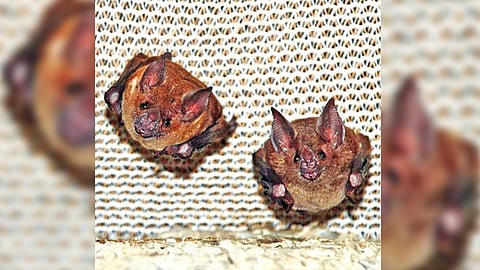

SABRINA IMBLER
CHENNAI: One morning in the Panamanian rainforest, a small fruit bat sized up his competition. The odds did not appear to be in his favor. The winged mammal, a Seba’s short-tailed bat, weighed about half an ounce. But his six opponents, fringe-lipped bats, were twice as heavy and occupying the shrouded corner where the small bat wanted to roost. Even worse, the larger bats are known to feast on small animals, such as frogs, katydids and smaller bats — including Seba’s short-tailed bats.
None of this fazed the Seba’s short-tailed bat, which proceeded to scream, shake his wings and hurl his body at the posse of bigger bats, slapping one in the face more than 50 times. “I’ve never seen anything like it,” said Ahana Aurora Fernandez, a behavioural biologist at the Natural History Museum, Berlin, who viewed a recording of the bats but was not involved in the research that produced it. “It’s one bat against six,” Dr. Fernandez said. “He shows no fear at all.” The tiny bat’s belligerence paid off as the big bats fled. The corner clear, the Seba’s short-tailed bat moved in, joined a minute later by his female companion, who had nonchalantly watched the fight from nearby.
This fun-size brawl and two similar bat bullying incidents in other roosts were observed by Mariana Muñoz-Romo, a biologist at the Smithsonian Tropical Research Institute, and her colleagues, who had been monitoring the sexual preferences of the larger fringe-lipped bats. In a paper published in March in the journal Behaviour, they asked how often tiny bats antagonize bigger ones. When it comes with a risk of being eaten, why pick a fight?
The researchers originally set out to study fringe-lipped bats, who were recently discovered to smear a sticky, fragrant substance on their arms, potentially to attract mates. The animals also have impressive appetites, and have been observed eating sizable frogs.
“Sometimes they take a nap with the frog hanging out of their mouth and then they’ll wake up and keep on eating,” said Rachel Page, a staff scientist at the Smithsonian Tropical Research Institute and an author of the paper.
The fringe-lipped bats have never been observed eating a Seba’s short-tailed bat. But a prior report of an abandoned house overtaken by fringe-lipped bats noted the skeletal remains of Seba’s short-tailed bats on the ground below, Dr. Muñoz-Romo said.
Seba’s short-tailed bats are common in Central and South America. The puny size of males doesn’t stop them from being aggressive. Maria Sagot, a behavioural ecologist at SUNY Oswego, said the bats prefer to roost in protected craters in the ceilings of tropical caves. “Groups usually live in those holes,” said Dr. Sagot, who was not involved in the study. “They usually fight to get a good position in those holes.” The males also fight to defend their harem of female mates from other males, she added.
Male Seba’s short-tailed bats have a repertoire of escalating manoeuvres along their wings. First, they vocalise or shake them, attempting to intimidate others from a distance. They then slap other bats’ faces with their wingtips, flinging their bodies and biting — the same tactics the Seba’s short-tailed bat used against his fringe-lipped opponents. The authors hypothesise this innate aggression may have led the little bat to attack his larger neighbours to defend his female companion.
Imbler is a science reporter with NYT©2022
The New York Times
Visit news.dtnext.in to explore our interactive epaper!
Download the DT Next app for more exciting features!
Click here for iOS
Click here for Android